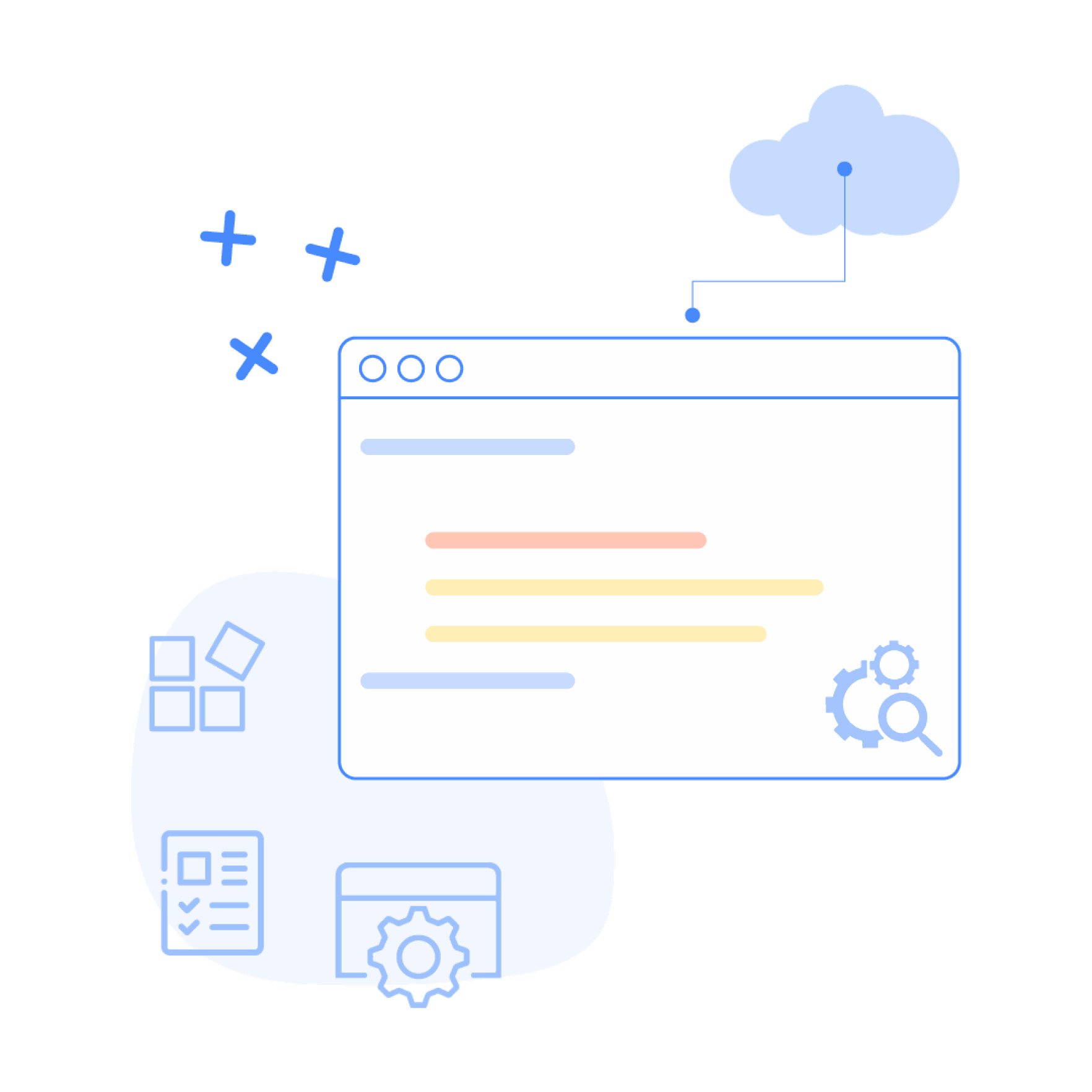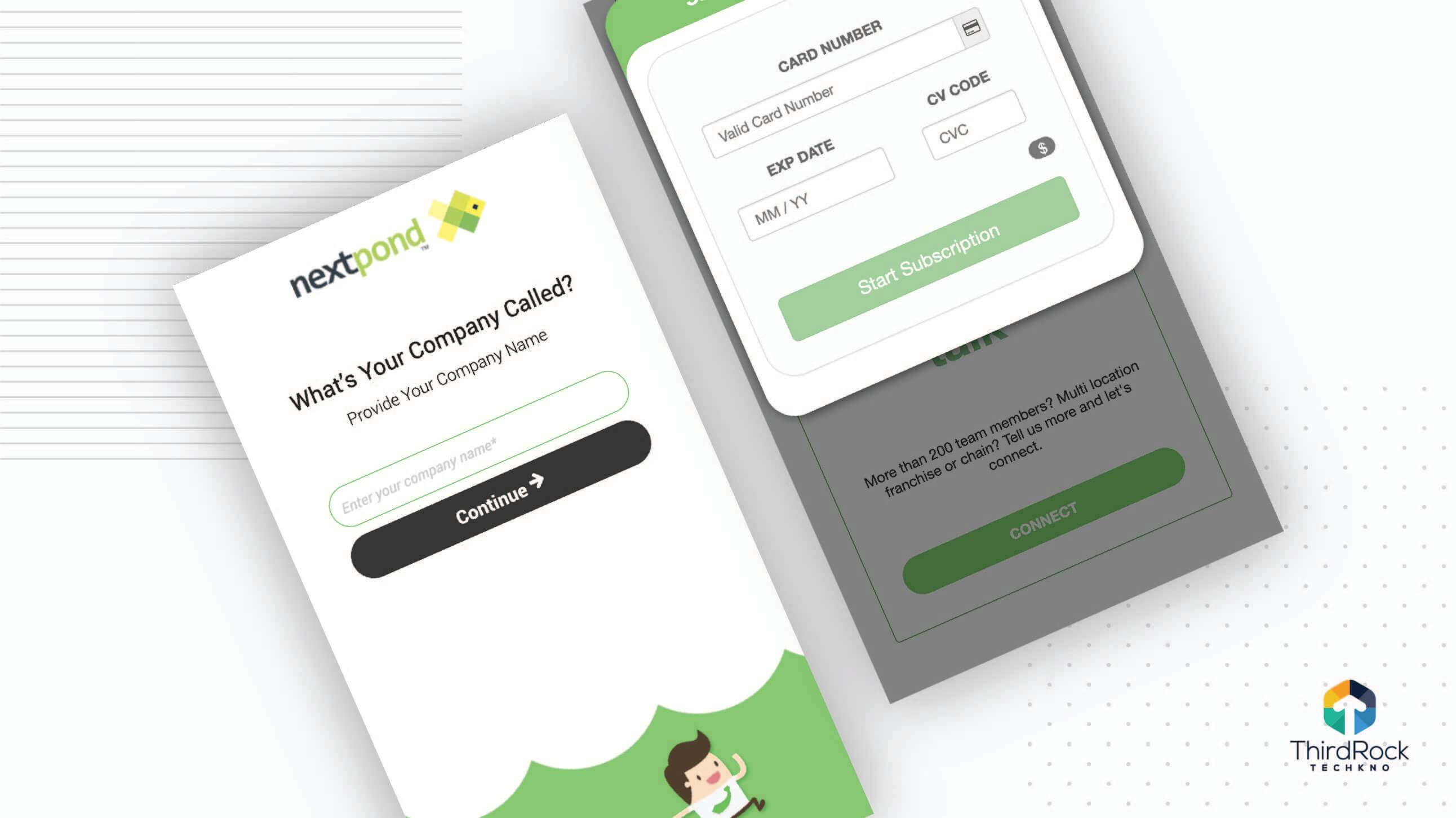

Our Google Action Services
- 1. Custom Action Development
- 2. Mobile App Integration
- 3. Integration with ERP System
- 4. Google action testing
- 5. Multilingual Support
Our Existing Clients
We cater to a diverse clientele spanning across various industries.
Why Choose Us As Your Google Assistant Development Company
Experienced Developers
Our highly-qualified Google Assistant Development experts specialize in building customized, creative and highly-interactive web and mobile applications. Whether you are a startup or an SME, our experts will get the job done.

Trusted Delivery Methods
We employ an agile methodology to keep you in the loop. Throughout AR development and mobile development, we focus on delivering solutions that meet your business goals, timeline, and budget.
Competitive Rates
Whether it is AR development or mobile development, we offer the most competitive rates on the market. Our personalized services meet different budget needs of our clients from across the globe.
Transparent Work Approach
Our AR development company ensures complete project visibility right from the time you approach us with your needs. We use email, phone, Skype, Slack, and other mediums for regular communication with our clients.
Customer Satisfaction
Our designers, developers, quality analysts, and a project manager – all strive for customer satisfaction. We deliver Google actions development services that align with our clients’ needs.
Client Testimonials
Our WORK speaks louder than our WORD. Find out how we helped clients overcome challenges and succeed.

Smoovr
Very good communication at all stages. Always prompt to reply. Excellent quality of work. The team at Third Rock Techkno was communicative, responsive, and accommodating as they produced high-quality work.
Jonathan Wood, Smoovr
Ontime
It was a pleasure working with the TRT team. Prior to contracting this group, I had a system created that was absolutely terrible and poorly developed. I also worked with a few freelancers that couldnt cut it either. TRT was actually able to execute on our concept and have built a truly solid system for our company.

Karl Pierre, Ontime
Features Of Google Assistant
Open Apps
Users can use this command to open apps, including third-party apps. e.g. 'OK, Google, open Gmail' and users are directed to their Gmail inbox.
Image Search
You can ask the search engine to look up any objects, animals, cars, bikes etc. by voice.
Play Music
Google’s Assistant enabled users to use it for playing music. Google Voice Assistant also supports apps such as Google Play Music, YouTube, Gaana, Saavn, etc.
Platforms
Google Assistant is supported in Android smartphones running Android Marshmallow or Nougat, Android wear, Android TV, Android Auto, and Google Pixelbook.
Smart Display
Smart displays have support for Google Duo video calls, YouTube videos, Google Maps directions, Google Calendar agenda, viewing of smart camera footage, in addition to services that work with Google Home devices.
Locate Places
Google Assistant can help users find places using its Nearby feature. Users can find restaurants, hotels, dance classes, most visited places, historical places, etc.
Recent Google Assistant Development Blogs

Is Low-Code The Future? How Do You Prepare for the Coming Transformation with FlutterFlow?
To stay ahead in business, it's important to quickly generate and develop new ideas. Low-code and no-code platforms are changing the game by making it easier for more people to create software. These platforms are growing fast and are expected to play a big role in the future of software development. Gartner predicts the low-code development platform market to reach a staggering $48.2 billion by 2025. That's explosive growth, reflecting the immense potential businesses see in low-code. Our Co-Founder Yashesh Chauhan also added:- “They simplify the process with low-code development, allows user to create applications with minimal coding, thus speeding up delivery and reducing costs. This popularity is growing by the need for businesses to rapidly adapt and innovate in the fast-pace and I think low-code development is a perfect technology in today fast moving world.” The Stats Don't Lie: Low-Code is Booming The industry is buzzing, and the numbers speak for themselves: * Business Adoption: A Kissflow study reveals that 70% of organizations are already using or plan to use low-code platforms. Companies are actively embracing this new paradigm, recognizing its value in accelerating innovation and digital transformation. * Development Speed: Low-code can cut development time by up to 10 times compared to traditional coding. This incredible speed allows businesses to bring ideas to life quicker, responding to market demands and opportunities faster. Also read:- The Rise of Low-Code App Development in 2024 Low-code In The Current Phase Low-code platforms are changing the way businesses operate by making software development more accessible and efficient. Here's a detailed look at how they are making an impact: 1. Improving Business Process Management Low-code platforms are transforming business process management by enabling companies to create custom applications quickly. These platforms provide tools and features that simplify the development process, allowing businesses to streamline their operations and make them more efficient. By using low-code platforms, companies can automate repetitive tasks, reduce manual errors, and improve overall productivity. A real-world example of this is Captive Resources, one of America's largest alternative insurance firms. Using Pulpstream, they were able to transform key business processes digitally, eliminate data entry redundancies, reduce service delivery time, and build operational resilience to change — all in four months. Without a low-code platform like Pulpstream, this transformation may have taken years to achieve. 2. Improving Small Business Transactional Systems For small businesses, low-code platforms offer a way to enhance their transactional systems without the need for extensive technical expertise. These platforms allow small businesses to easily build applications that manage sales, inventory, customer data, and other essential functions. As a result, small businesses can improve the accuracy of their transactions, gain better insights into their operations, and make more informed decisions. A perfect example is Commerce Casino. After embedding Pulpstream's low-code automation solution, Commerce Casino saves its HR department two to three hours a day by automating digital processes so the HR team can focus on more critical tasks within the organization. 3. Generating APIs and Integrating Platforms Low-code platforms enable businesses to generate APIs (Application Programming Interfaces) and integrate different software platforms. This integration capability allows for seamless data exchange between systems, enhancing the functionality of low-code applications. Low-code automation tools make the work of IT and DevOps teams much lighter. These tools have visual environments and simple drag-and-drop interfaces that let regular employees, not just experts, create connections between different work applications. This helps create a smoother and more consistent workflow, making better use of the organization's resources like people, time, and money. 4. Streamlining and Automating Workflows Low-code platforms are particularly effective in streamlining and automating workflows. By using these platforms, businesses can design workflows that automate various processes, from simple tasks like data entry to more complex operations like approvals and decision-making. This automation reduces the need for manual intervention, minimizes errors, and accelerates the completion of tasks. For example, Robotic Process Automation (RPA) helps enterprise IT teams reach into multiple databases, information systems, and data sources to perform specific tasks on a schedule. Low-code tools, on the other hand, are simpler solutions that serve as connectors between two work applications or tasks. 5. Helping Non-Technical Employees One of the most significant advantages of low-code platforms is their ability to allow non-technical employees. These platforms provide user-friendly interfaces and visual development tools that enable employees with limited coding knowledge to create and manage applications. This transformed the software development allows employees who are experts in their domain to contribute directly to the creation of solutions that meet their specific needs. Want to build app in no time with low-code development? Contact us! Future Phase of The Low-Code The low-code platforms are changing quickly. They are promising a future where making applications is easier, faster, and safer than ever. Here are some important changes that will change the way we create and use software 1. Visual Modeling Tools Imagine crafting applications like flowcharts, with intuitive interfaces that even non-technical users can master. Think drag-and-drop logic diagrams instead of complex coding syntax. This visual approach will democratize development even further. 2. Out-of-the-Box Functionality Pre-built components and integrations will become even more sophisticated, covering a wider range of needs. Building an e-commerce store or a data-driven dashboard? Pre-built modules will expedite the process, allowing for rapid customization and deployment. 3. Drag-and-Drop Interface The future is visual, with drag-and-drop interactions becoming the primary way to build applications. Imagine assembling your app like building blocks, making development an intuitive and accessible experience for everyone. 4. Unwavering Security As these platforms evolve, so do their security measures. Secure coding practices, encryption, and multi-factor authentication will be seamlessly integrated, ensuring that applications built are secure from the ground up. 5.Effortless Scalability Gone are the days of infrastructure overhauls when your business grows. Low-code/no-code platforms are designed to scale with your needs, automatically adapting to accommodate larger user bases and increased data volumes. Also check:- How to add custom font at particular space in your app - Flutter 5 Most Important Low-code Trends That Are Changing the IT Industry The way we create software is changing because of the low-code development. It's becoming easier and faster. To get ready for this change, especially with tools like FlutterFlow, you can follow these trends 1. Easy Entry to Application Development Traditionally, complex coding languages and years of training were entry barriers. Now, anyone with an idea and a willingness to learn can build basic applications on low-code platforms. This innovation and citizen development within organizations, where non-technical employees can contribute to solving business challenges. 2. Transformation of Programming As coding expertise becomes less of a prerequisite, a new generation of developers is emerging. Businesses can tap into the diverse talents and perspectives of individuals who wouldn't have considered a programming career before. This diversity breeds innovation and opens up new possibilities for problem-solving. 3. Low Cost and Fast Development Speed Traditional development can be expensive and time-consuming, often hindering innovation due to budgetary constraints. Low-code significantly reduces both costs and development time, allowing businesses to experiment, iterate, and bring ideas to market faster. This agility gives them a competitive edge in today's rapidly changing landscape. 4. Hyper Automation Repetitive tasks and workflows that bog down teams can be automated using low-code platforms. By integrating technologies like AI and machine learning, low-code empowers businesses to automate complex processes, enhancing efficiency and accuracy while freeing up employees for more strategic work. 5. Software as a Service (SaaS) The shift towards delivering applications as a service aligns perfectly with the low-code/no-code model. Businesses can access software solutions on demand, eliminating the need for extensive infrastructure maintenance or upfront investments. This subscription-based model provides flexibility, scalability, and cost. Looking for Low-code development expect? Contact us! How Do You Prepare for The Coming Transformation of Low Code? The low-code development is transforming how we develop software, making it more accessible and efficient. To prepare for this shift, especially with platforms like FlutterFlow, here are some steps you can take: * Stay Informed: Keep up with the latest trends and developments in low-code technology. Follow industry news, read articles, and participate in webinars or conferences to understand how low-code is evolving. * Learn About FlutterFlow's Features: Familiarize yourself with FlutterFlow's capabilities. Explore its drag-and-drop interface, pre-built widgets, and integration options. Understanding these features will help you leverage the platform effectively. * Upskill Your Team: Encourage your team to learn about low-code development and FlutterFlow. Provide training sessions or online courses to help them get comfortable with the new tools and techniques. * Identify Use Cases: Look for areas within your organization where low-code can make a difference. Start with simple projects that can benefit from quicker development times and easier maintenance. * Evaluate Current Processes: Assess your existing software development processes to see where low-code can fit in. Identify any bottlenecks or inefficiencies that low-code can address. * Engage with the Community: Join FlutterFlow forums, online communities, or social media groups. Engaging with other users can provide valuable insights, tips, and best practices. * Pilot Projects: Start with small pilot projects to test the waters. This will help you understand the practical implications of using low-code and how it impacts your workflow. * Support Collaboration: Encourage collaboration between technical and non-technical team members. Low-code platforms like FlutterFlow can bridge the gap between different roles, fostering a more inclusive development environment. * Establish Governance: Set up guidelines and standards for using low-code in your organization. This will ensure consistency, security, and quality in your low-code projects. * Monitor Trends: Stay alert to new trends in low-code development. This includes advancements in AI, machine learning, and other technologies that can enhance low-code platforms. * Ready for Cultural Shifts: Prepare your organization for the cultural changes that come with low-code adoption. Embrace a mindset of continuous learning and innovation to make the most of this transformative technology. Still have questions? Talk to our expert Are You Ready for the New Transformation of Low Code? The growth of low-code development platforms is an important trend in technology. These platforms help businesses to build software quickly, which can lead to more new ideas and better ways of working. Third Rock Techkno will help you effectively with Low-Code Development platforms. We offer guidance and support, showing all the practical examples and how Low-code development can be useful. With our Development services we can help you bring your ideas into reality. Contact us today for Low-code development! FAQs 1.Is low-code development the future? Yes, as businesses seek faster, more efficient ways to innovate, low-code development stands out as a key enabler of digital transformation. 2.What is the low-code trend in 2024? The low-code trend in 2024 points towards increased adoption, with businesses leveraging low-code platforms for a wider range of applications, driven by advancements in technology and growing demand for digital solutions. 3. Will no-code and low-code platforms replace traditional software development? While not a complete replacement, no-code and low-code platforms are becoming an essential complement, especially for rapid prototyping, MVP development, and business-specific applications. 4. What can you build using low-code development? The spectrum ranges from simple internal tools to complex, enterprise-grade applications, including customer portals, CRM systems, and more. 5. Are low-code/no-code apps suitable for complex systems like hospitals and finances? Yes, with advancements in platform capabilities, including security and integration features, these applications are increasingly capable of supporting complex, mission-critical systems.

Outsourcing Software Development for Startups: Benefits and More
Outsourcing software development for startups is one of the most effective ways to build competitive products. If you are a startup owner or trying to build your own startup, then you must explore the option of outsourcing software development for startups to ensure high product quality without making a hole in your pocket. As stated in a recent market report, the global IT & software outsourcing market is forecast to surpass US $800 billion by 2025 holding nearly 75% of the global IT and software services market. There are multiple reasons why outsourcing software development for startups is in high demand worldwide, for outsourcing benefits such as professional expertise for development to launching, cost-effective development solutions, robust support, and market-driven product development, to name a few. Outsourcing software development can be highly advantageous for startups. By leveraging external expertise and resources, startups can overcome budgetary constraints and accelerate product development. This approach allows them to scale their operations flexibly, and focus on their core business objectives. In this article will explore the key advantages of outsourcing software development for startups and how it can contribute to their success. See More: The Benefits of Custom Software Development 7 Benefits of IT Outsourcing for Startup Let’s know why outsourcing software development for startups is taking over the product development sector. 1. Access to Global Resources One of the key benefits of outsourcing software development for startups is, that you get access to a global pool of resources to bring the best out of your product development. Irrespective of your geographical location, time zone, core industry, and other factors, you get to leverage the skills of the industry-leading professionals with years-long expertise. As you get to choose from top-notch resources, it takes your whole startup building and growth journey to the next level. See More: How to Contract Software Development: Key Things to Include 2. Market-Driven Results No matter how good you think your product is unless it is compatible with the present market, half of its purpose is lost. Outsourcing software development for startups from the top entities can assure you about this. As professional experts with market experience are in charge of your product development, they can develop a market-driven product. This implies that your product will be equipped with all the competitive features and solutions it needs to sustain and excel in the present as well as future markets. 3. Cost-Effective Outsourcing software development for startups can be the best yet cheapest way to develop a high-quality product, provided you opt for the right method, region, and entity. For instance, countries like India, China, and Japan have the costs on the lower side, while in the U.S, U.K, Canada, and others it will cost you a lot even to build a simple app. Here's a glimpse of the region-wise software development outsourcing costs chart for your knowledge. It is recommended to go for the software development outsourcing services from India as it offers the most qualified professionals at the lowest cost possible around the globe. 4. Minimized Risks Whenever you start building a product, there are a lot of risks involved. It mainly depends on how saturated the market is, what your expertise is, how strong and experienced your team is, and several other factors. Unless you want to experiment with your time, money and resources or you have a highly skilled in-house team, it is always recommended to opt for outsourcing software development for startups. All you need to do is pick up a reliable software development service provider, and the rest will be taken care of. Resources optimization to building a quality product that completely fits the current market - you can be assured of everything through outsourcing software development for startups. 5. High Flexibility Outsourcing software development for startups lets you have great flexibility. As the major responsibility related to product development, testing, launching, and management is handled by the outsourced team, you can get enough flexibility to focus on other important areas or allocate your limited resources strategically. 6. Better MVP Creation Outsourcing software development for startups facilitates better and budget-friendly MVP (Minimum Viable Product) creation. As the experts with domain-specific experience develop, test, and launch your product, they know the right formula to build an effective MVP. They completely take care of deciding and including the required features and not any redundant ones. At the same time, the MVP is built in a way so that your overall time, cost, and resources can be optimized and it can cater to successful final product development and launch. This also ensures a better market positioning of your product as well as your whole business or startup from day one and helps you accommodate the target audience’s requirements better. See More: 7 Concrete Tips To Reduce Software Development Costs 7. Enhanced Focus on Core Competencies By outsourcing their IT functions, startups can offload the burden of managing complex technical aspects and focus more on their core competencies. Instead of investing valuable time and effort into IT operations, startups can channel their energy toward innovation, product development, and customer acquisition. It can drive greater efficiency and competitive advantage. The Bottom Line Outsourcing software development for startups is not just a craze but gaining traction for certain reasons. Not only the startups with limited time and resources are opting for it, but it has become a go-to option for diverse businesses from diverse industries. Even if you don’t have time, money, and resource constraints, it is recommended to opt for outsourcing software development for startups to ensure high-quality products and to secure your market position. No matter what type of product development services you are looking for, we, at Third Rock Techkno, have it all for you. Web development to voice or app development - our professional experts ensure optimum quality product development and industry-leading outcome. Check out our portfolio and contact us for a free consultation. FAQs Q1: How does software development contribute to the growth and success of startups? Software development plays a crucial role in the growth and success of startups by enabling them to build scalable solutions, differentiate themselves in the market, improve operational efficiency, enhance customer experiences, and adapt to changing market dynamics. Q2: What cost-effective advantages can startups gain through software development? Software development allows startups to automate tasks, reduce manual labor, optimize resource allocation, and minimize operational costs in the long run. It enables them to achieve more with fewer resources and avoid unnecessary expenses. Q3: What factors should startups consider when choosing a software development approach? Startups should consider factors such as project requirements, budget, time-to-market, scalability needs, in-house expertise, and long-term business goals when choosing between custom development, off-the-shelf solutions, or hybrid approaches. Q4. How can outsourcing software development enhance the speed of product development for startups? Outsourcing software development accelerates product development for startups by leveraging specialized expertise, agile methodologies, and dedicated resources. External development teams focus on fast-paced development, allowing startups to meet tight deadlines, scale their capacity quickly, and launch products to market faster.

Software Design Document Vs Software Requirement Specificification - A Complete Guide
Software design document vs software requirement specification is a common topic to be discussed in software development. While both are highly important for any software development project, not knowing the basic differences may lead to various issues during the development process. As per the recent statistics, nearly 70% of the projects fail to deliver what they are supposed to and the development process, strategies, and practices have a lot to do with this. It is important to know how to make SRS documents, and SRS designs, as well as understand the difference between requirements and specifications in software engineering. This will also help you document each of them properly and utilize them in the right way. So, in this blog, we will guide you through all you need to know about software design documents vs software requirement specifications. What Is a Software Design Document? A software design document is defined as a written form of a report that includes all the vital information regarding the software design, architecture, and how to design it while meeting technical specifications. It is also known as a software design specification document. A software design document is highly important as it specifies all the information related to the software design process, software design requirements, architecture, and others. It not only ensures that all the main software design requirements are met but also helps streamline the workflow of the software development team by guiding them through the right steps to how to build the software. Also Read: Discovery Phase of Project: A Complete Guide What Is a Software Requirement Specification Document? The software requirement specification or SRS document plays a very significant role in the software development process. A software requirement specification or SRS document is defined as a document that specifies all the details related to the software development process such as software development project scope, required features & solutions in the final product, functional & non-functional specifications, and maintainability, reliability, safety, resources, and others. It is important to know how to make an SRS document as it simplifies everything by offering a detailed specification of all vital areas of software development. As a result, it becomes easier for the software developers to follow the right direction and meet the specific set of requirements in the final product. Also Read: Mobile App Development - Step by Step Guide for 2022 Software Design Document Vs Software Requirement Specification Software design document vs software requirement specification is one of the most discussed topics in software engineering and software development. And now that you have better knowledge of SRS design and software requirements, let’s discuss in detail the difference between requirements and specifications in software engineering. There are a lot of factors that differentiate between the software design document and software requirement specification as we are going to discuss below. Content Content is the first thing that comes to your mind while knowing how to make an SRS document or how to write a software design document. And the content for these two types of documents is completely different from one another. An SRS document includes all the specification-related information of a software development project. The content of an SRS document is focused on the various areas of a project such as - * The outline of your software development project. * The purpose of your software development project is like, why is it being developed, or the main reasons behind opting for that specific idea of product development. * The description of your software from different perspectives such as operability, functionality, and others. * The key functionalities of your software, what is it supposed to do and how is it supposed to execute specific tasks, etc. * The performance of your software - the details specifications like its expected performance level, related KPIs (Key Performance Indicators), competitive factors like how well is it supposed to perform compared to the other similar products in the market, and others. * The different non-functional properties that are expected from the product. * The key external interfaces of the product and how will those interact with the other software or hardware, their key capabilities, and functionalities. * The expected constraints to overcome during the product development or the key restraining factors while developing various features and solutions of the product. * How the product development will help you meet the overall business goals. * The target audience or end-users of your product and how to cater to their requirements efficiently. A software design document on the other hand includes all the details regarding the description of the software, how its features will be built, or how the product will be designed to meet the specific set of technical requirements. There are several pointers related to the design of your software that you need to include in a software design document such as - * The overall overview of the software development project mainly focused on the design and the stakeholders along with the relevant information. This section should also include the title and the compact summary with the relevant information in simple-to-understand language so that everyone can utilize it. * The context of your software development project and how to build the software efficiently to make it purposeful. This section of the software design document also specifies the key and useful metrics to measure the success of the software from various aspects. * A comprehensive and relevant technical solution with proper details that can guide the software developers through the right steps to develop the right product. * A detailed timeline guide that includes the milestones, time frame, and other relevant details so that the project team can know when and how to achieve the same on time. Purpose The main purpose of doing SRS design or knowing how to make an SRS document is, to provide the entire project team with a well-defined framework that they need to follow. It lists out the top software requirements needed to develop a project successfully while offering adequate information on the same. It is pivotal for not only the software developers but for the whole project team as it offers important insights on the operations, quality assurance, maintenance, key features and solutions to have in the product, and others. So, it is more like an informative guide for your software development team to ensure a successful product launch. A software design document is more descriptive. It describes the complete design of the product or software the team is developing so that the developers can have a clear idea of exactly what is being developed. The main purpose of a software design document is to ensure the complete product design is achieved or that everything that is required in the software architecture and design is maintained. It not only helps the developers know in-depth about the expected software design but also describes how to design that, which architectural or project development approach can work the best etc. So, when it comes to knowing the difference between the requirements and specifications in software engineering, this factor remains a prime differentiator. Method In the software design document vs software requirement specification discussion, it is important to know the method followed to make each of them. To write an SRS document, you will need complete information on the project. Project scope, goals, features, functional requirements, etc. all information is vital for SRS design. And so, the method involves going through the project requirement details as well as the overall project goals aligned with the business. The software design documentation method, on the other hand, needs a more in-depth knowledge of the technical requirements, processes, system architecture, design development process, and the relevant tech stacks. Instead of the whole project and business perspectives, it is more focused on the whole software architecture design and the final design as per the requirements. And hence, the method of writing a software design document involves knowing the whole software design requirements, relevant technical process to follow, and other information. No doubt that the method of documentation is one of the top factors that help you understand the difference between requirements and specifications in software engineering. Significance The SRS document is highly significant in ensuring the product quality as well as the product features and solutions and how competitive they are in the present market. Not only the basic project scope, but all the other important areas such as the present market, competition, future growth scope, and others are taken into account during the SRS documentation process. So, it is highly significant in developing an efficient and competitive product for the present market as well as the one that can be a good fit as per the upcoming trends and demand as well. The significance of the software design documents lies in the development of a complete product design that meets all the technical specifications. It ensures that the software design and architecture areas are required and efficient to deliver what the software is meant to. Also, a software design document is highly significant when it comes to the maintainability, scalability, and reliability of a product in the long run. Also Read: Rapid Application Development (RAD): A Complete Guide Takeaway Software design document vs software requirement specification is a widely discussed topic to explore. While both are an integral part of the software development process, it is crucial to know the differences to document them in the right way. The above guide will help you document the software requirements and software design properly and make the best out of it. All you need to know is the key differentiating factors and the main goals and purposes of such documents. However, based on your product development type, requirements, goals,m and other factors you need to focus on the documentation process. Are you searching for a product development solution? We, at Third Rock Techkno, have our extensive range of product development services that include web development, app development, voice development, and more. Check out our latest portfolio and drop us a line for a free consultation.
Get the exact time and cost estimation of your project
Our business consultants and industry strategists will devise just the right scoping document to meet your unique project needs.
Schedule A Discovery Session


